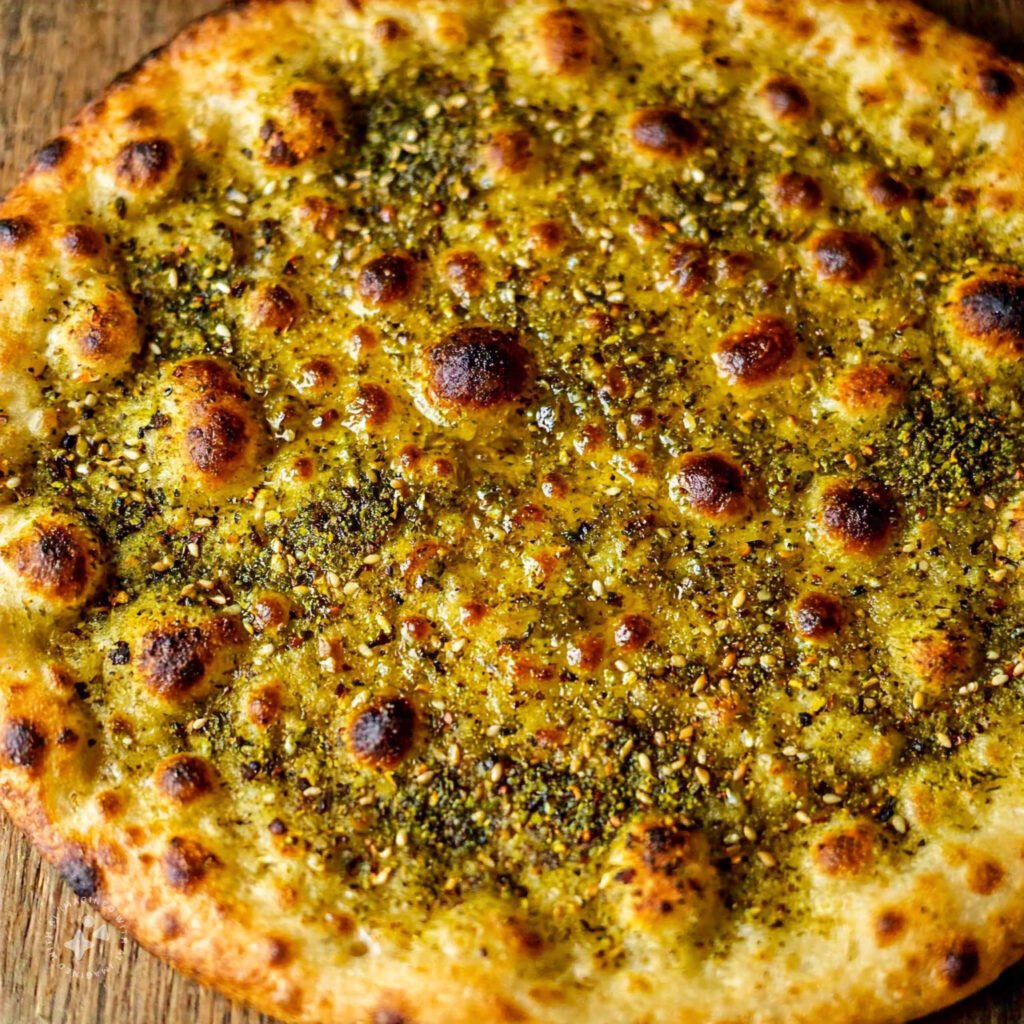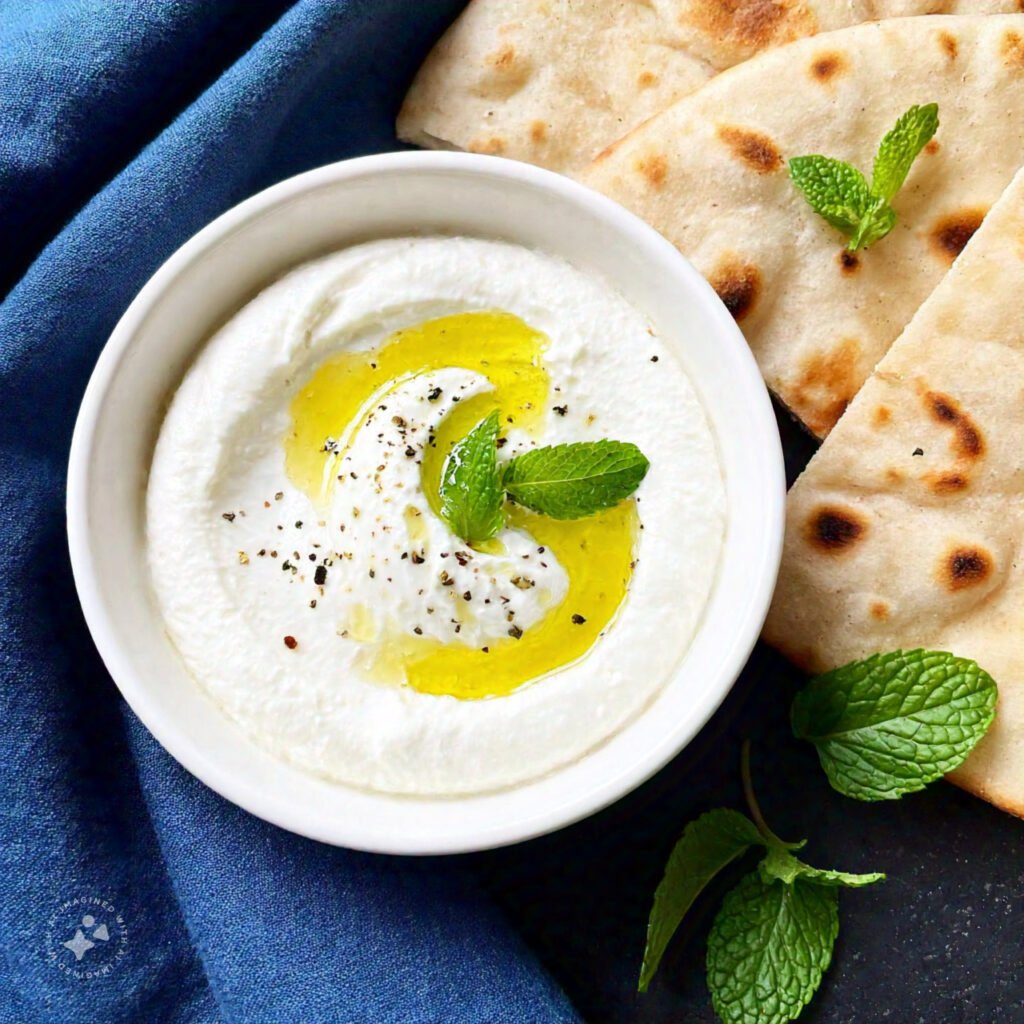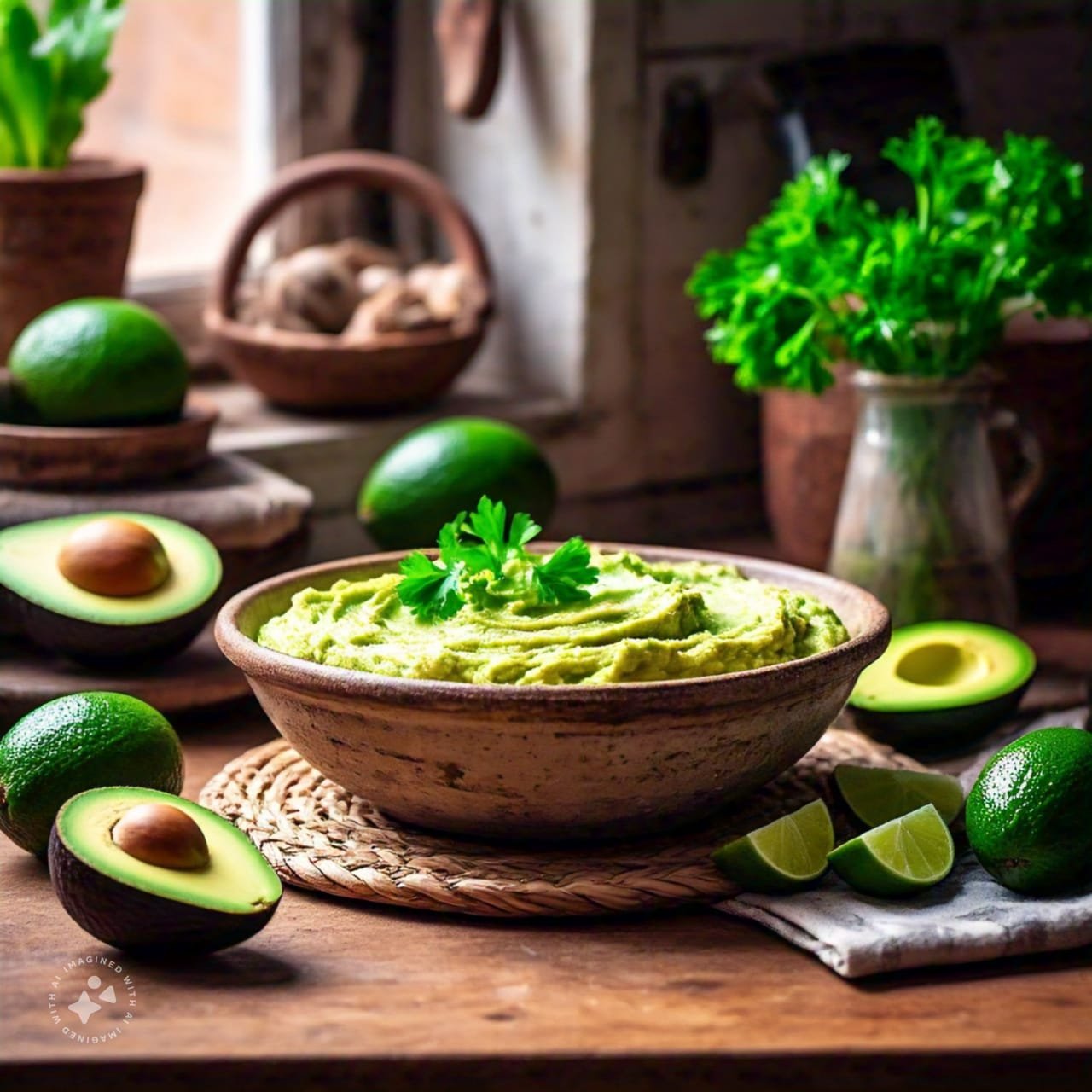Table of Contents
What is a typical Lebanese breakfast? If you’ve ever wondered what makes mornings in Lebanon so unique, you’re in for a treat! A typical Lebanese breakfast is a flavorful and communal experience, deeply rooted in culture and tradition. It’s not just about food—it’s about starting the day with family, fresh ingredients, and dishes that tell a story of heritage and love.
The Essence of Lebanese Breakfast Culture
Breakfast in Lebanon isn’t just another meal. It’s an event, a time to connect with loved ones, and a chance to indulge in food that’s both delicious and meaningful.
A Morning Tradition Rooted in Community
Lebanese breakfasts are deeply social. Families and friends gather around large communal tables, sharing stories and laughter while savoring a spread of dishes. It’s not unusual to see people linger over breakfast for hours, using the time to strengthen bonds and start the day on a high note.
One might even say that breakfast in Lebanon is where the heart of community thrives. Imagine waking up to the aroma of freshly baked bread wafting through the air, the chatter of loved ones, and the vibrant clatter of plates being set. It’s magical, isn’t it?
“Lebanese breakfast is more than food—it’s the heartbeat of the morning.”
The Role of Fresh Ingredients in Lebanese Breakfast
In Lebanese cuisine, freshness is non-negotiable. Whether it’s the tangy tomatoes, crisp cucumbers, or silky olive oil, every ingredient is carefully selected to ensure it’s as fresh and flavorful as possible. This attention to detail elevates even the simplest dishes, turning them into something extraordinary.
Lebanese breakfasts are a masterclass in simplicity and elegance. You’ll rarely find anything overly processed or complicated. Instead, it’s about letting the natural flavors shine. For example, a drizzle of olive oil over creamy labneh transforms it into a luxurious treat.
Popular Lebanese Breakfast Dishes
So, what’s on the table during a typical Lebanese breakfast? The variety might surprise you! Here are some of the iconic dishes you’ll often find:

Manakish: The Iconic Lebanese Flatbread
Manakish is the crown jewel of Lebanese breakfasts. Think of it as Lebanon’s answer to pizza—but with a Mediterranean twist. This flatbread is typically topped with za’atar (a blend of thyme, sesame seeds, and sumac), cheese, or minced meat before being baked to golden perfection.
Za’atar manakish is a fan favorite. Its earthy, tangy flavor pairs wonderfully with fresh vegetables and a piping hot cup of tea.
Labneh: Creamy Strained Yogurt Delight
Labneh, a staple in Lebanese homes, is yogurt’s sophisticated cousin. Thick, tangy, and creamy, it’s served with a drizzle of olive oil and often accompanied by olives, mint, and a sprinkle of dried herbs.
Labneh is incredibly versatile. You can spread it on warm bread, use it as a dip, or even enjoy it on its own. And guess what? It’s packed with probiotics, making it a healthy choice, too!
Foul Medames: A Hearty Bean Dish
If you’re craving something filling, foul medames is the dish to reach for. Made from slow-cooked fava beans seasoned with garlic, lemon juice, and olive oil, it’s as comforting as a warm hug.
Foul is usually served with a variety of sides, like fresh vegetables, pickles, and bread. It’s not just a dish—it’s an experience.
“Foul medames is proof that simple ingredients can create magic.”
Balila: Chickpeas in Lemon and Garlic
Balila is another crowd-pleaser, featuring boiled chickpeas tossed with garlic, lemon juice, and a splash of olive oil. It’s light, refreshing, and bursting with flavor.
Balila is often enjoyed alongside other dishes, adding a layer of texture and taste to the meal. Plus, it’s rich in protein, making it a fantastic way to fuel your day.
Knefeh: A Sweet Cheese Pastry Favorite
No Lebanese breakfast is complete without something sweet, and knefeh fits the bill perfectly. This indulgent pastry combines a semolina crust with a gooey cheese center, all drenched in rose water syrup.
Knefeh is usually enjoyed with a sesame bun, creating a heavenly balance of sweet and savory. It’s the ultimate treat for anyone with a sweet tooth.
Key Accompaniments in a Lebanese Breakfast
A Lebanese breakfast wouldn’t be the same without its accompaniments. These seemingly small additions bring the meal to life and enhance every bite.
Fresh Vegetables: Tomatoes, Cucumbers, and Mint
Fresh vegetables are a must at any Lebanese breakfast table. Crisp cucumbers, juicy tomatoes, and fragrant mint leaves add a refreshing contrast to the richer dishes.
These veggies aren’t just for decoration—they’re meant to be savored alongside labneh, foul, or manakish. It’s a delicious way to sneak in some extra nutrients!
Olives and Olive Oil: A Lebanese Staple
lives are a quintessential part of Lebanese breakfasts. Whether black or green, they’re enjoyed as a snack or as a topping for labneh and other dishes.
Then there’s olive oil—liquid gold in Lebanese cuisine. Its fruity, rich flavor elevates everything it touches, from bread to beans to cheese.
Traditional Beverages: Tea, Coffee, and Arak
What’s breakfast without something to drink? In Lebanon, the classics reign supreme.
- Tea: Light and aromatic, often brewed with fresh mint.
- Coffee: Rich and strong, sometimes spiced with cardamom.
- Arak: A traditional anise-flavored spirit, though it’s more common at leisurely weekend breakfasts.
With this rich tapestry of flavors and traditions, it’s easy to see why Lebanese breakfasts are so beloved. But what makes this meal truly special is the heart and soul that go into it. It’s about more than food—it’s about connection, heritage, and love.
The Social and Cultural Significance of Lebanese Breakfast
Lebanese breakfast isn’t just a meal—it’s a way of life. In Lebanon, mornings revolve around togetherness, whether it’s with family, neighbors, or friends. This social ritual is as integral to the culture as the food itself, and its significance goes beyond what’s on the plate.
Family and Community Bonding Around Food
Think about the last time you sat down with loved ones to share a meal. Wasn’t it comforting? That’s exactly what breakfast means in Lebanon. It’s a time to connect, to talk about life, and to relish the company of those around you.
Families gather around a table filled with freshly made dishes, often prepared lovingly by a matriarch or shared among everyone. There’s laughter, storytelling, and even a little playful debate about who gets the last piece of manakish.
It’s not uncommon for breakfast to spill into the late morning, especially on weekends. This unhurried pace allows people to savor the food and the moment—a refreshing contrast to the fast-paced breakfasts many of us are used to.
The Slow Food Philosophy of Lebanese Breakfasts
Lebanese breakfasts embody the “slow food” philosophy, emphasizing quality, authenticity, and a connection to the origins of what we eat. Here, meals aren’t rushed. Instead, they’re thoughtfully prepared and thoroughly enjoyed.
This approach reflects a deep respect for tradition. Recipes are often passed down through generations, preserving the flavors and techniques that make Lebanese cuisine so unique. Whether it’s hand-rolling dough for manakish or fermenting yogurt for labneh, every step is an act of love.
“Breakfast in Lebanon isn’t just about eating—it’s about celebrating life’s simple pleasures.”
Common Challenges in Preparing a Lebanese Breakfast
As delightful as a Lebanese breakfast is, preparing it can come with its own set of challenges. From sourcing authentic ingredients to managing time, let’s explore some common hurdles and how to overcome them.
Accessibility of Authentic Ingredients
One of the biggest challenges for those outside Lebanon is finding the right ingredients. Za’atar, fresh labneh, and authentic Lebanese olive oil aren’t always readily available, especially in smaller towns or countries without a large Middle Eastern community.
Even when these ingredients are available, they might not have the same quality or flavor as their Lebanese counterparts. For example, the za’atar blend you pick up at a local grocery store might lack the tangy punch of sumac that defines the dish.
Balancing Time-Intensive Recipes with Modern Life
Let’s be honest—many traditional Lebanese dishes take time to prepare. From soaking and slow-cooking beans for foul medames to kneading and baking fresh manakish, the process can be daunting, especially for those with busy schedules.
In modern households, balancing the desire for an authentic breakfast with the constraints of time can feel like an uphill battle. This is why shortcuts and simplified recipes have become increasingly popular, though some purists might argue that it’s not quite the same.
Recreating Traditional Flavors Abroad
Recreating the taste of a Lebanese breakfast outside Lebanon can be tricky. The environment, the freshness of ingredients, and even the water used in recipes can all affect the final flavor.
For instance, labneh made with milk from a local farm in Lebanon might taste vastly different from one made with store-bought milk in another country. These subtle differences can be frustrating for those striving for authenticity.
Solutions to Enhance Your Lebanese Breakfast Experience
Luckily, there are ways to overcome these challenges and make your Lebanese breakfast experience just as enjoyable, no matter where you are.
Where to Find Fresh and Authentic Ingredients
Many specialty grocery stores and online marketplaces now cater to those seeking authentic Middle Eastern ingredients. Look for za’atar blends imported from Lebanon, or consider making your own using dried thyme, sesame seeds, and sumac.
For labneh, you can create it at home by straining yogurt overnight. It’s surprisingly easy and gives you control over the texture and flavor. Fresh vegetables, olives, and bread can often be sourced from local farmers’ markets for that added touch of authenticity.
Simplified Recipes for Busy Lifestyles
If time is an issue, there are plenty of shortcuts to make Lebanese breakfast more manageable:
- Pre-made Manakish Dough: Some bakeries or grocery stores sell ready-made dough that you can top with za’atar and bake at home.
- Canned Fava Beans: For foul medames, canned beans are a quick alternative to soaking and cooking dried ones. Just be sure to rinse them thoroughly.
- Labneh Substitutes: Greek yogurt is a great stand-in for labneh in a pinch. Add a bit of salt and strain it for a similar texture.
These small adjustments allow you to enjoy the flavors of Lebanon without spending hours in the kitchen.Tips for Hosting a Lebanese Breakfast Gathering
If you want to share the joy of a Lebanese breakfast with friends or family, hosting a gathering can be a wonderful idea. Here are a few tips:
- Create a Variety: Include both savory and sweet dishes, like manakish, labneh, foul, and knefeh.
- Set the Mood: Play some traditional Lebanese music and decorate the table with fresh flowers or olive branches.
- Encourage Sharing: Lebanese breakfasts are all about communal eating. Provide large serving plates and encourage everyone to dig in.
“Hosting a Lebanese breakfast is like inviting warmth and tradition into your home.”
Health Benefits of a Typical Lebanese Breakfast
Beyond its cultural and social significance, a Lebanese breakfast also offers a wealth of health benefits. Rooted in the principles of the Mediterranean diet, it’s a fantastic way to start your day on a nutritious note.
Nutritional Value of Common Ingredients
Many staples of a Lebanese breakfast, like olive oil, legumes, and fresh vegetables, are packed with essential nutrients. For instance:
- Olive Oil: Rich in heart-healthy monounsaturated fats and antioxidants.
- Chickpeas and Fava Beans: Excellent sources of protein, fiber, and complex carbohydrates.
- Labneh: High in probiotics, calcium, and protein, supporting gut and bone health.
Mediterranean Diet Influence on Heart Health
The Mediterranean diet is globally renowned for its heart health benefits, and Lebanese breakfasts fit perfectly within this framework. The combination of healthy fats, fresh produce, and lean protein helps reduce inflammation and support cardiovascular wellness.
When you indulge in a typical Lebanese breakfast, you’re not just feeding your body—you’re nourishing your soul. With the perfect blend of tradition, flavor, and health, it’s no wonder this meal has captured hearts around the world.
Exploring Lebanese Breakfast Around the World
The allure of a Lebanese breakfast extends far beyond the borders of Lebanon. Thanks to the global Lebanese diaspora and a growing interest in Middle Eastern cuisine, these morning delights are now celebrated worldwide. Whether in bustling metropolitan cities or quaint suburban neighborhoods, the flavors of Lebanon have found a place on tables everywhere.
Lebanese Breakfast in the Diaspora
For many Lebanese immigrants, breakfast is a comforting reminder of home. Families recreate traditional dishes to preserve their heritage, often adding a unique twist to adapt to local ingredients and tastes.
In cities with large Lebanese communities, such as Detroit, Sydney, or Paris, bakeries and restaurants serve up fresh manakish, labneh, and other classics. These spots become gathering hubs, connecting people to their roots while introducing newcomers to the joys of Lebanese breakfast.
Even in smaller towns, you’ll often find Lebanese families hosting friends for breakfast, spreading the love for their culture through food. It’s a beautiful example of how traditions can transcend borders.
Restaurants and Cafes Serving Authentic Dishes
The rise of Lebanese cuisine’s popularity has led to an increase in restaurants and cafes serving authentic breakfasts. These establishments often emphasize the communal and cultural aspects of the meal, creating an atmosphere that mirrors the warmth of a traditional Lebanese home.
Some standout dishes you’ll find include:
- Manakish baked to order in wood-fired ovens.
- Foul medames prepared with a perfect balance of garlic, lemon, and olive oil.
- Knefeh served as a breakfast dessert, complete with syrup and sesame bread.
These eateries not only preserve culinary traditions but also provide an opportunity for food enthusiasts to experience the magic of Lebanese breakfasts firsthand.
How to Get Started with a Lebanese Breakfast at Home
If you’re inspired to recreate a typical Lebanese breakfast in your own kitchen, you’re in for a treat. With a bit of preparation and the right ingredients, you can bring the flavors of Lebanon to your morning routine.

Essential Tools and Ingredients You’ll Need
To get started, gather some key tools and ingredients:
- Tools: A rolling pin, a baking stone or sheet, and a sturdy skillet are helpful for making manakish and foul medames.
- Ingredients: Stock up on za’atar, olive oil, chickpeas, fava beans, fresh vegetables, and plain yogurt.
Having these basics on hand ensures you’re ready to whip up a delicious Lebanese breakfast whenever the craving strikes.
Simple Recipes to Begin Your Journey
Here are a few easy recipes to help you get started:
- Quick Manakish Za’atar:
- Mix za’atar with olive oil to form a paste.
- Spread it over store-bought or homemade flatbread.
- Bake at 375°F (190°C) for 10 minutes, or until golden.
- Easy Labneh:
- Line a strainer with cheesecloth and place it over a bowl.
- Pour plain yogurt into the cheesecloth, tie it up, and let it strain overnight in the fridge.
- Drizzle with olive oil and serve with pita bread.
- Foul Medames:
- Heat canned fava beans in a skillet with garlic and lemon juice.
- Drizzle with olive oil and garnish with parsley.
These simple dishes capture the essence of Lebanese breakfast while being accessible to cooks of all skill levels.
Conclusion: A Journey Through Lebanese Morning Delights
Lebanese breakfast is more than just a meal—it’s a cultural experience that nourishes both the body and soul. From the iconic manakish and creamy labneh to the warm embrace of foul medames, every dish tells a story of tradition, community, and love.
Whether you’re savoring a leisurely breakfast with family or exploring Lebanese cuisine for the first time, these morning delights offer something special for everyone. By embracing the flavors, rituals, and values of a Lebanese breakfast, you’re not just starting your day—you’re embracing a piece of Lebanon’s heart and soul.
You might also like Why Is Lebanese Food So Healthy?





